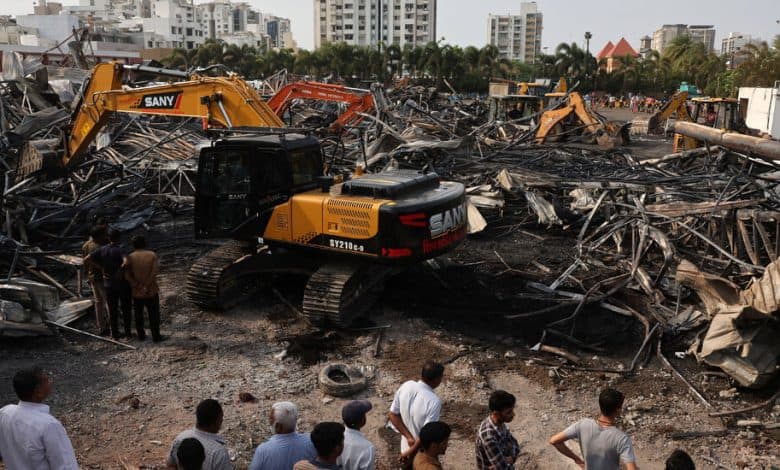Two Deadly Fires in Rapid Succession Expose India’s Gaps in Safety

Seven newborn babies lost their lives after their New Delhi neonatal clinic was engulfed in flames. What remained of the two-story building on Sunday morning was its burned facade, a charred spiral staircase and oxygen cylinders covered in soot.
Hours earlier, in the western Indian city of Rajkot, an amusement park of trampolines and bowling lanes had turned to an inferno. The families of people who had come to enjoy a discounted offer of all-you-can-play to celebrate the start of summer vacation were left trying to identify bodies among the at least 27 dead, many of them children too charred to be recognizable.
As after every such deadly episode, political leaders were quick with messages of condolence, announcements of arrests, creations of inquiries — and finger-pointing. But to analysts and experts who had warned for years about India’s abysmal fire preparedness, the back-to-back disasters on Saturday were the latest reminder that systemic change to make the country safer was still missing.
Building safety compliance remains abysmal across India, the world’s most populous nation. The fire services have long faced huge gaps in the numbers of stations, personnel and equipment. Government audits after mass-casualty disasters unearth glaring shortcomings, with little follow-up.
Though the number has gone down over the past decade, more than 20 fire-related deaths occur every day in India, according to government statistics. Many of the fires — particularly in crowded urban centers — are caused by short circuits, an alarming prospect as India faces an intense period of heat waves that strains electrical wires.
R.C. Sharma, a former fire service chief in Delhi, said that one major problem is that fire regulations go unenforced. Another is that fire-response resources have failed to keep up with urbanization that is happening rapidly and often without regard to safety.
